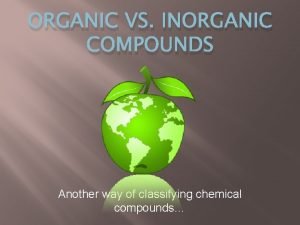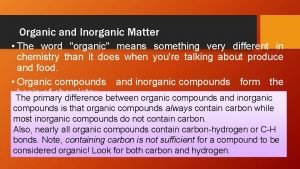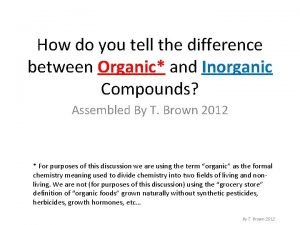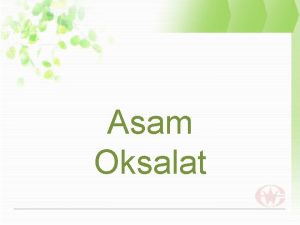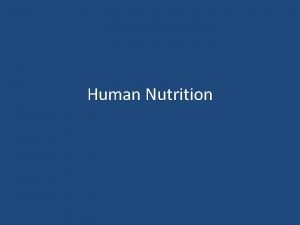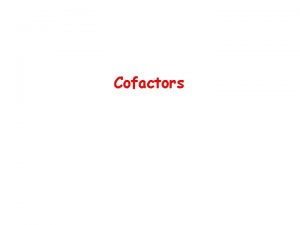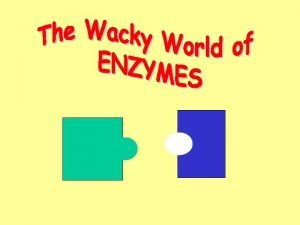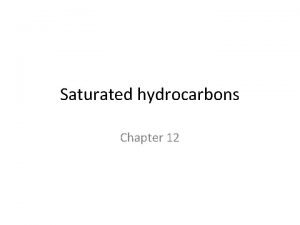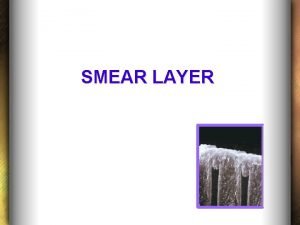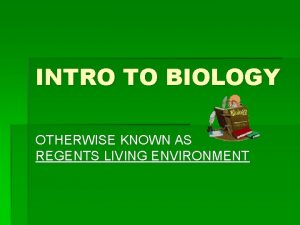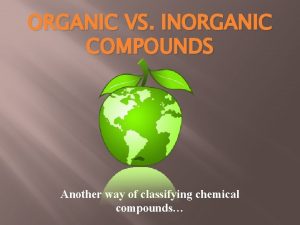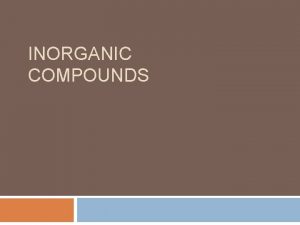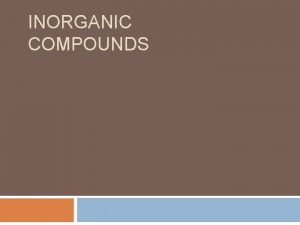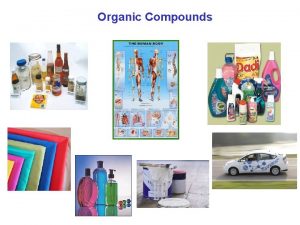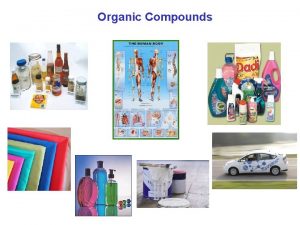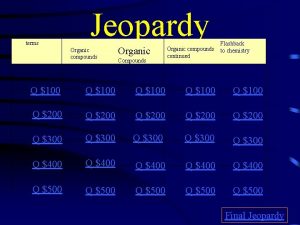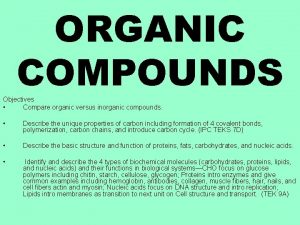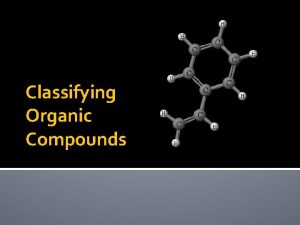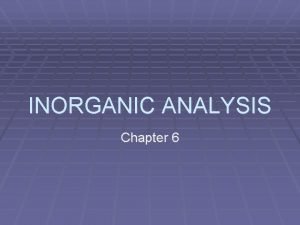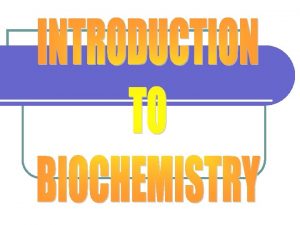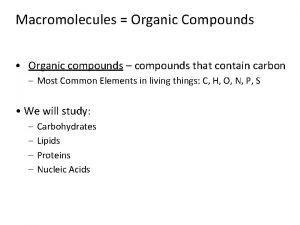ORGANIC VS INORGANIC COMPOUNDS Another way of classifying
















- Slides: 16

ORGANIC VS. INORGANIC COMPOUNDS Another way of classifying chemical compounds…

Organic Compounds • In science, organic compounds contain carbon (C), and usually hydrogen (H) • Sometimes other types of atoms are also attached, including: oxygen, halogens, and nitrogen

Is that why foods are called“organic”? � � Organic actually derives from “coming from life”, because the compounds that plants and animals make are all Ccompounds This is not the meaning of organic foods though! � In this case organic refer to being produced without chemicals (ironically many of these chemicals are actually ORGANIC compounds!)

Inorganic Compounds • Inorganic compounds do not contain carbon with three exceptions: • Carbon Monoxide and Carbon Dioxide • Compounds containing cyanide (CN-) and carbonate (CO 3 -) ions • Acids containing C—these can be identified because H is written before the C!

Why are organic compounds so special? �Carbon has four electrons in its valence shell, which allows for more chemical bonding possibilities than any other element. Long chains of carbons form petroleum and plastics Some cyclic (“circular”) rings of carbons form pesticides The acetaminophen molecule: the active ingredient in Tylenol

Hydrocarbons � A hydrocarbon is an organic compound that contains only carbon and hydrogen. � Hydrocarbons are based on a carbon “backbone”, or chain, with hydrogen atoms added on the sides

You know about hydrocarbons already! �The simplest hydrocarbons are ones that you might recognize and have even used! Methane (CH 4)--- main component of natural gas Ethane (C 2 H 6)--- also found in natural gas Propane (C 3 H 8) --- used as a fuel for BBQs Butane (C 4 H 10) --- an extremely flammable fluid used in industrial torches Octane (C 8 H 18)---a combustible liquid in gasoline �All hydrocarbons are flammable, and most are liquids at room temperature

Alcohols are hydrocarbons too… � Alcohols are organic compounds with C, H and O. �The simplest alcohols are: Methanol (CH 4 O)--- used in labs as a solvent but causes blindness! Ethanol (C 2 H 6 O)---is a psychoactive drug (present in alcohol), but is now being considered as a fuel source Isopropyl alcohol (C 3 H 8 O)---rubbing alcohol used to sterile cuts �Alcohols are generally very flammable �MUST END IN (OH)

ORGANIC OR NOT? ? ? DNA ORGANIC---DNA is has a sugar backbone, which consists of carbon, hydrogen and oxygen

ORGANIC OR NOT? ? ? Vegetable Oil ORGANIC--- oils and fats are long-chain carbon compounds, which are used by living things as a way of storing energy

ORGANIC OR NOT? ? ? Sulphuric Acid NOT! Sulphuric acid (H 2 SO 4) is the strong acid found in car batteries, but doesn’t contain carbon and isn’t organic

ORGANIC OR NOT? ? ? Corn starch ORGANIC! Starch is produced by plants as a way of storing sugars that they don’t need right away

ORGANIC OR NOT? ? ? Copper (II) Sulphate NOT! Copper (II) sulphate is a beautiful blue crystal, but does not contain carbon and is definitely not organic!

Three different representations: 1. Structural formula- lists the elements and their proportions in the order they are bonded Methane CH 4 Methanol CH 3 OH Acetic Acid (Vinegar) CH 3 COOH

Three different representations: 2. Ball-and-stick model- each element is given a different colour and/or size and the picture shows how many and how the elements are bonded Each black ball represent C… Each white ball represents H… The red ball represents O… This is Ethanol! (alcohol group -0 H)

Three different representations: 3. Space-filling model- similar to a ball-and-stick model, but an animated model that shows how elements are connected Methylisocyanate- a valuable synthetic component for biology CH 3 N=C=S Heme- the iron-containing component of hemoglobin, C 34 H 32 Fe. N 4 O 4
 Organic vs inorganic compounds
Organic vs inorganic compounds Charring test of organic and inorganic compounds
Charring test of organic and inorganic compounds Site:slidetodoc.com
Site:slidetodoc.com Importance of organic compounds
Importance of organic compounds What is the difference between organic and inorganic
What is the difference between organic and inorganic Organic and inorganic cofactors
Organic and inorganic cofactors Oxalic acid is organic or inorganic
Oxalic acid is organic or inorganic Organic and inorganic nutrients
Organic and inorganic nutrients Organic vs inorganic chemistry
Organic vs inorganic chemistry Organic and inorganic cofactors
Organic and inorganic cofactors Organic vs inorganic
Organic vs inorganic Which compound is inorganic
Which compound is inorganic Iupac nomenclature of cycloalkanes
Iupac nomenclature of cycloalkanes Smear layer is organic or inorganic
Smear layer is organic or inorganic Organic vs inorganic
Organic vs inorganic Organic molecules vs inorganic molecules
Organic molecules vs inorganic molecules Organic growth vs inorganic growth
Organic growth vs inorganic growth
